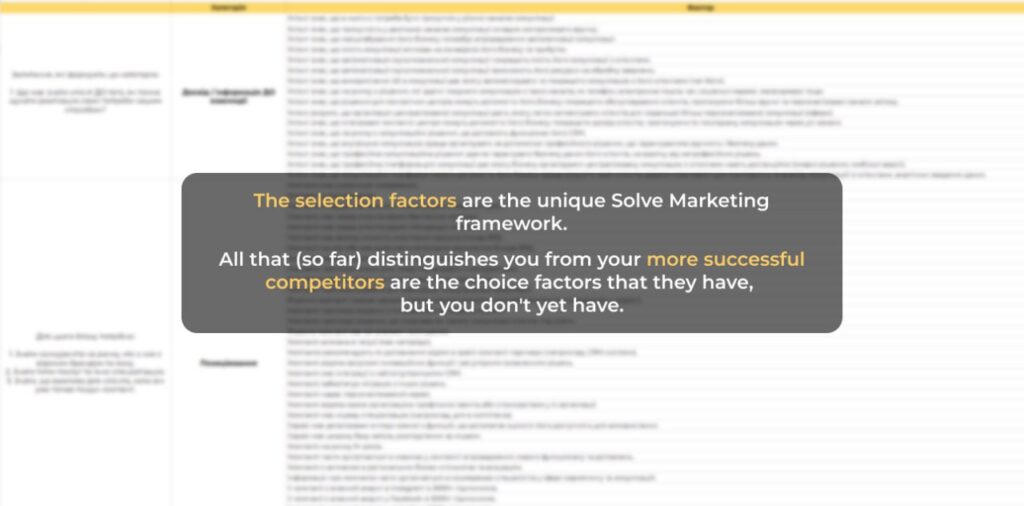Dynasty Stomatology is a story about how an experienced Ukrainian team of dentists, who have already conquered Krakow, decided to conquer the Prague market. But is it enough to just open the doors of a new premium clinic so that patients will immediately be drawn to you? Of course not.
“Our goal is to provide full appointments with doctors. For the first month, we plan to have half the workload,“ this is how Dynasty Stomatology formulated the task for us.
It would seem that the experience of Krakow would give us a head start. But in reality, it turned out to be quite different: a new market, a new audience, new rules of the game. Dynasty Stomatology turned to Solve Marketing to build a system that would work for results from day one.
What the market analysis showed
The detailed research revealed a complex mosaic of the Prague dental market. While in Krakow, 90% of clients are Ukrainians, in Prague, Ukrainians account for only 40%. The rest are Kazakhs and other expats. And, of course, the Czechs make up the bulk of the market.
Insight №1: When researching new markets, it is critical to abandon stereotypes about the “similarity” of countries. Even neighbouring European markets can differ dramatically in terms of demand structure and consumer behaviour. The Czech dental market is a different game. Here, 20% of patients consciously choose premium clinics, and they are willing to pay extra for comfort in order not to stand in queues for insurance compensation.
We conducted an in-depth market analysis and identified several key trends:
- The Prague market is saturated, but with a shortage of supply in the private segment, it is a goldmine for a new player who knows how to present themselves.
- The premium segment is showing an ever-increasing demand for high-tech procedures: implants, aesthetic dentistry, 3D scanning.
- In Prague, the share of customers willing to pay extra over and above the insurance benefit reaches 65% among Czechs and is even higher among the Russian-speaking diaspora.
- The multicultural portrait of Prague requires a flexible language strategy: Czech, Ukrainian, Russian, English.
- Medical dental tourism, worth $426 million and growing at an annual rate of 23.3%, is opening up an additional niche.
The main challenge: there is a staff shortage in the market — 20% of Czechs do not have a public dentist and are forced to look for private clinics.
This means one thing: those who quickly adapt to local realities and build the right strategy will become market leaders.
Enter a new market and need thorough research? Don’t risk your budget on intuition — order a professionalmarketing strategy that will take into account all the features of your target audience.
Who plays on the dental market in Prague and how
The competitive landscape of Prague dentistry turned out to be more complex than expected. We analysed the websites, social media, reviews, and promotion channels of key market players.
Insight №2: Competitive analysis should go beyond a cursory review of websites. The real insights are hidden in the details of the customer experience — from the speed of responding to inquiries to the quality of communication. Most dental clinics in Prague use the same approaches and speak in similar phrases. But the best ones stand out due to several factors:
- Multi-page websites with detailed descriptions of services and online registration.
- Bilingualism or trilingualism as a standard for working with foreigners.
- Organic SEO search provides 50-70% of traffic.
- Paid advertising in Google Ads and Meta brings up to 40% of traffic.
- Reviews on Google Maps (4.5-4.9) have a critical impact on patients’ choices.
In social media, competitors demonstrate different strategies: some simply duplicate content between platforms, while others create unique video content for each network.
To check how communication works in the niche, we conducted a Mystery Shopper study. We sent the same request to seven clinics and evaluated the speed of response, quality of communication, and completeness of the offer.
We were surprised by the results:
✅ The fastest clinics responded in 3-4 minutes.
❌ Slow players caused delays of nearly an hour or no response at all.
✅ Language support: most clinics provide communication in Ukrainian and Russian.
❌Technical issues: some clinics did not have online appointment forms available.
❌ Instability: pauses in communication for up to 30 minutes.
Insight №3: The Mystery Shopper methodology reveals the true picture of competitors’ service and it often differs dramatically from what their websites and advertising show. Thus, we have seen that the market has not yet reached uniform high standards of customer service, which creates huge opportunities for Dynasty Stomatology’s competitive advantage.
Project status analysis: strengths and growth points
The current state of Dynasty Stomatology’s marketing has shown an interesting picture — there is a strong foundation, but localisation for a new market is needed.
What works well:
- Developed Instagram activity with thoughtful and diverse content.
- A combination of real patient feedback, treatment results and expert explanations.
- Professional look of the profile in the corporate style.
- Experience of working with Ukrainian and Russian-speaking clients.
Where there is room for improvement:
- The Facebook page is inactive.
- Activities on YouTube and Telegram.
- The need to localise content for the Czech audience.
SWOT analysis: a map of opportunities for Dynasty Stomatology
The success of a dental clinic is made up of dozens of factors — from technical equipment to reputation in the local community. Our task is to find the levers of influence that will maximise Dynasty Stomatology’s position in the new market.
Each clinic has unique advantages that can become the basis for competitive success, and at the same time weaknesses that can block growth, even if they are skilfully disguised behind a professional facade.
We used SWOT analysis as a strategic tool. It is a mirror that shows not only the internal resources of the clinic, but also the full context of the environment in which it will have to fight for the trust of patients. For Dynasty Stomatology, we assessed the whole picture: internal strengths and weaknesses, external risks and opportunities in the Prague dental market.

This analysis has shown: Dynasty Stomatology has all the resources it needs to successfully conquer the Prague market, but it needs a clear strategy to apply them.
Find out how your competitors actually work and find the weaknesses to break through.
Audience segmentation: who are our future patients?
Proper segmentation is the basis for effective communication. Using the 5W method (Who, What, When, Where, Why), we identified five key segments:
- Affluent Czechs — locals with a high level of income.
- Corporate expats — foreigners working for international companies.
- Ukrainian and Russian-speaking diasporas Premium — representatives of high-income diasporas.
- Family clients — families looking for comprehensive services.
- Medical tourists — patients from other EU countries.
Each segment has unique needs, motivations and communication channels. No random messages — only a targeted, thoughtful approach.
Choice factors — what really influences a patient’s decision
The patient’s decision to choose a dental clinic is not formed at the moment of calling or making an appointment — it is born much earlier, through hundreds of small signals and points of contact.
From the first impression of a clinic in search results to the final decision after a consultation, every element of interaction affects trust and willingness to become a patient. The website, reviews, manager’s response speed, the atmosphere in the clinic, and the professionalism of the doctors all add up to a holistic architecture of trust.
We have created a framework of choice factors that allows us to manage these signals and turn them into a strategic tool for patient engagement. For Dynasty Stomatology, we have formulated more than 100 factors that influence the decisions of different audience segments — from technical equipment to emotional comfort during treatment.

💡 The Choice Factors framework is a strategic approach that allows you to influence the underlying motivations for patient choice and build long-term competitive advantage.
Among the key factors we have identified:
Speed factor: the waiting time for the first appointment is 1-2 days, when competitors have patients waiting up to 6 months for some procedures. This becomes a decisive argument for those who need urgent treatment.
Personalisation factor: each patient receives an individual loyalty programme with accumulative discounts and personal offers, which creates a sense of special treatment and motivates repeat visits.
Insight №4: Successful positioning is not based on one “big” factor, but on a system of interconnected advantages. The choice factors framework allows you to identify and systematise all the points of influence on a customer’s decision, from rational to emotional.
This framework has become the basis for the formation of strategic messages and a plan for implementing competitive advantages.
Developing a positioning
In the world of dentistry, where most clinics use the same phrases, it is important to find something truly unique.
“Reliable dentistry with European service” sounds familiar, doesn’t it? But does it make the patient make a choice in your favour?
We approached the task comprehensively. Analysis of competitors, customer choice factors, and the clinic’s internal processes were all used as tools.
What we did NOT recommend:
❌ Positioning around technological superiority: in the competitive Prague market, technological sophistication is the norm, not an advantage. Competitors can easily duplicate any technological solution.
❌ Positioning around leadership: since the clinic is just entering the Czech market, direct statements about leadership will seem unconvincing.
What we focused on:
✅ Multiculturalism and language comfort is a real competitive advantage.
✅Speed and availability — waiting time of 1-2 days instead of months.
✅Personal and comprehensive approach — individual loyalty programmes and service.

The main thing is not to invent something artificial, but to see the real value that already exists but is not fully exploited.
Doubtful whether your positioning is working for results? Book a free consultation and find out what to do next.
Lead generation: from hypotheses to a systematic approach
In most areas of dentistry, decisions are made rationally — especially when it comes to aesthetic services. Trust, service transparency and quality of communication play a key role here.
We have carefully studied the activity of competitors in Meta and Google Ads, investigated the risks and feasibility of each channel.
Conclusion from the analysis: competitors are actively using videos, Reels, carousels with reviews, simple messages, and offers of free consultations.
Our strategy:
- Build a full-fledged funnel: acquaintance → trust → appointment.
- Engage through aesthetic videos of the clinic, the treatment process, doctors, and patient reviews.
- Use lead forms and quizzes instead of complex forms on the website.
- Set up retargeting for video views and interactions.
Here’s an example of a campaign:
Campaign 1: Attracting attention
- The goal was to create awareness of the clinic as a reliable, modern and comfortable dental centre.
- Creatives — emotional but restrained video and static creatives of the clinic, the team of doctors, and the calmness of patients.
- Audience — men and women aged 25-55 + Ukrainians / Russian-speaking expats.
- The messages are comfort, guarantees, security, and a clear process.
What’s next?
All the research and analyses we conducted formed the basis of a comprehensive marketing strategy that covers the full cycle of interaction with different segments of the audience — from the first meeting to the formation of long-term loyalty.
The final stage of our work was the creation of a detailed strategic plan with a clear implementation phase: from basic quick-start tools to advanced scaling and customer retention mechanisms.
This approach allows Dynasty Stomatology to move systematically, without chaotic experiments and wasting resources. Each tool has its own place in the overall architecture, its own launch time and clear performance indicators.
We do not leave a client after developing a strategy.
We create a foundation that helps to:
- achieve ambitious goals through a systematic approach;
- adapt tactics to real market conditions;
- invest the marketing budget with a predictable ROI, rather than wasting it on uncertain experiments.
We work as strategic partners
We immerse ourselves in the specifics of your business and help you build a sustainable growth system that takes into account the realities of your market and audience.
No matter what stage your project is at:
– a start-up looking to quickly conquer the market;
– or a stable business preparing to open new locations or launch additional services.
We will help you build a marketing system from strategy to result:
👉 from positioning and multilingual communication to recognition among the target audience,
👉 from content strategy and lead generation to a steady stream of quality applications,
👉 from first points of contact to retention and loyalty programmes.
Ready to build systematic marketing to conquer a new market? Sign up for a free consultation — we’ll show you how to adapt our approach to the specifics of your business.
FAQ
Is it possible to quickly conquer a new market without any previous experience in it? Experience in one country does not guarantee success in another — each market has a unique audience, competition and communication features.
How do you know what to adapt when entering a new market?
Three aspects are critical: target audience behaviour, the competitive environment, and cultural communication. What works in one market may fail in another.
How long does it take to adapt marketing to a new market?
Basic adaptation can be done in 2-3 months, but full customisation to local specifics takes 6-12 months. It is important to understand that this is an investment in long-term success.
Is it enough to translate content into the local language for successful localisation? Localisation includes the adaptation of messages, visuals, communication channels, and even business processes to the cultural specifics of a new market.
How do you minimise risks when entering an unfamiliar market?
The key is a step-by-step approach: first, in-depth research, then hypothesis testing on small budgets, and only after positive results — scaling the strategy.




